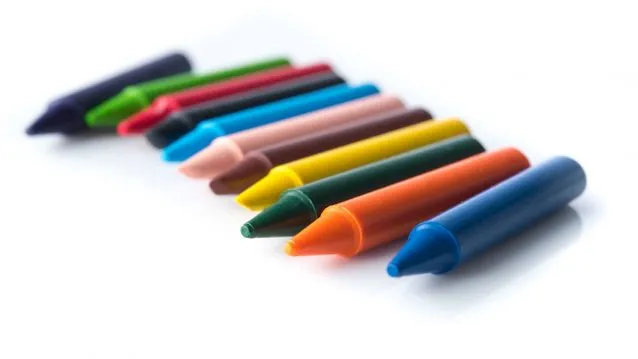That pack of $1 crayons from the dollar store is so appealing when your color-mad five-year-old makes it her sole purpose in life to use as many crayons as humanly possible. Of course, this chaotic scribbling could be the beginning of a bright artistic future (who knows?) and who are you to limit her crayon use and potentially curb that creativity. Therefore, it can become a little pricey to keep your burgeoning artist in crayons. However, the solution isn’t turning to cheap crayons…in fact, those discount crayons could be laden with asbestos. Read on to find out more.
A 2018 report from a consumer advocacy group known as U.S. PIRG Education Fund noted a concerning trait in many children’s school products and supplies. This study looked at 27 back-to-school essentials and discovered that Playskool crayons, (sold at Amazon, eBay, and The Dollar Store) contained the toxic chemcial asbestos.
Asbestos is a chemical that is typically found in housing-construction materials, so what is it doing in children’s crayons?
What is wrong with asbestos?
Asbestos has been linked to over 9.9 million deaths annually across the globe, with over 2,500 Americans alone dying yearly from avoidable poisoning. Airborne asbestos particles are known to affect children particularly, causing mesothelioma in many cases.
Though the United States has not banned asbestos entirely, 55 other countries have eliminated this fire-proofing material from production and the US has implemented minor restrictions in recent years.
According to the U.S. Environmental Protection Agency (EPA) “Asbestos is the name for a group of naturally occurring minerals that separate into strong, very fine fibers. The fibers are heat-resistant and extremely durable, and, because of these qualities, asbestos has become very useful in construction and industry. In the home it may or may not pose a health hazard to the occupants, depending on its condition. When it can be crushed by hand pressure or the surface is not sealed, to prevent small pieces from escaping, the material is considered FRIABLE. In this condition fibers can be released and pose a health risk. However, as long as the surface is stable and well-sealed against the release of its fibers and not damaged, the material is considered safe until damaged in some way.”
Though this disclaimer indicates that asbestos is not toxic until it is airborne, are crayons really worth risking your child’s health?
Why is it in the crayons?
Obviously, asbestos was not added intentionally to the Playskool crayons; however, its presence shows a surprising lack of concern for eliminating this toxic chemical from products. Asbestos is a by-product of talc production, which is a common ingredient in many cosmetic and general household goods. With proper safety regulations in place, the talc should be refined and then tested to ensure that the asbestos was removed. U.S. PRIG is calling for more rigorous testing and refining standards that would make it more difficult for asbestos fly under the radar.
What to do?
Though you may not have considered it before, it is vital to assess the safety of any product you allow your child to use. The advocacy group U.S. PRIG, recommended looking for the Art and Creative Materials “AP” label on school products that indicates they are nontoxic.
Homemade crayon recipe
What you’ll need:
- Carnauba wax -8-10 grams per crayon
- Beeswax
- Colorant of choice -earth pigments, cosmetic colorants, chalk, gel food dye – 2-3 g for dry pigments, 1/4 tsp for liquid colorants
- Old saucepan- use a saucepan from the thrift store or one you’re willing to dedicate to crayon making
- Disposable paper cups
- Disposable stir sticks
- Molds -you can get a specific crayon mold or experiment with fun shapes
What to do:
- Place pigments into paper cups, one cup for each color and arrange molds so that they are ready to be poured into.
- Melt wax in your saucepan over low heat. Be sure to completely melt the carnauba wax before stirring in the beeswax.
- Once the wax is combined and totally liquid, reduce the heat to your burners lowest setting.
- Pour a few tablespoons into a single cup with the pigment of your choice and use a stir stick to combine it very quickly. Then transfer it to the mold immediately.
- Be sure to keep the pot on the heat during this time and move fast or else the wax will harden before you are able to pour it into the mold.
- Repeat this process until you are out of wax or pigment.
- Allow the crayon to harden at room temperature for 2 hours before using.
How did your homemade crayons turn out? Let us know in the comments below!
-The Alternative Daily

